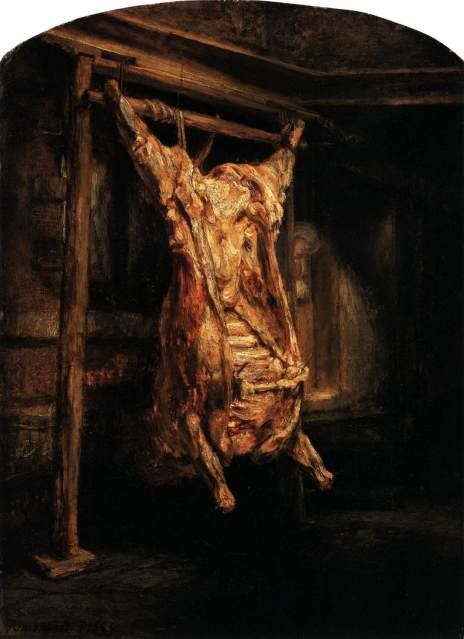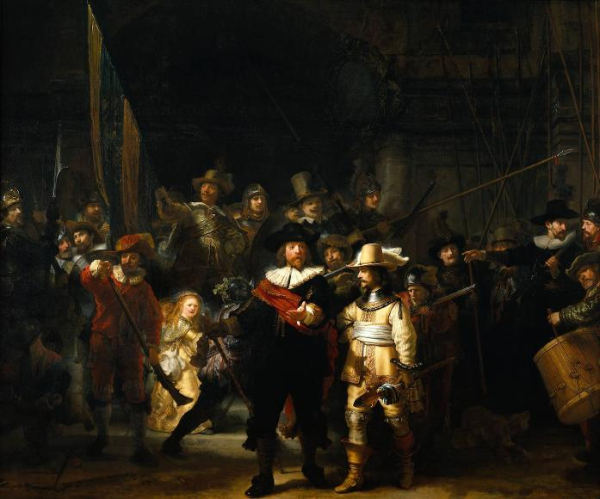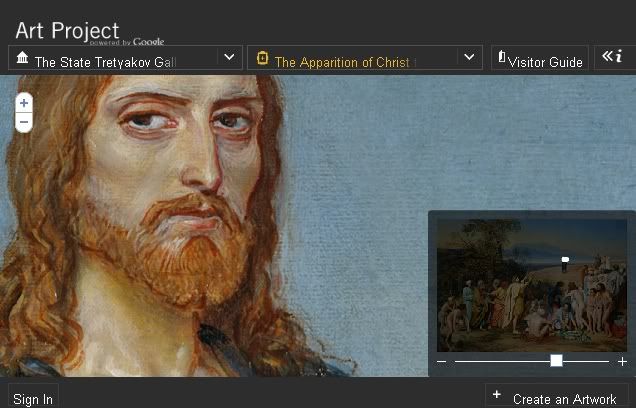Welcome to the April edition of art history carnival! Spring is here for many of us (we still have a snowstorm scheduled to arrive in Edmonton tonight, but at least the days are getting longer!), and with Easter coming up this weekend, its certainly the time of year when we are reminded of death and rebirth.
Several of this carnival's posts tend towards the weightier side, and bring to mind some of the less pleasant aspects of the circle of life and of the violent world of our ancestors. I recently read Steven Pinker's The Better Angels of Our Nature: Why Violence has Declined . It's a truly fascinating book that examines why the world today is generally less violent than it was in the past. His argument is controversial because it flies in the face of many of the myths our society loves to perpetuate, such as the notion of a more peaceful/idyllic past, untarnished by the evils of mass consumerism and modern alienation (dear William Morris was the victim of that particular vision, I'm afraid).
Throughout my life I have known many people who profess to pine for the nasty, brutish and short lives of the martyrs. These people are well aware of the fact that medieval spirituality was informed by horribly violent culture that meant constant encounters with death and torture - and they miss it, because they think it would make them better people (personally, I'm inclined to think that it wouldn't, it would just make them more violent!).
At any rate, art history is filled with constant reminders of the lives of those who have gone before us. I, for one, am incredibly grateful to be living in the world of Google's Art Project, rather than that of Rembrandt's Night Watch or The Roettgen Pietà (pictured below)!
art history
As a historian, I have always been struck by the immediacy of death in Europe during the Medieval period. Death was everywhere, and people were intimately aware of its horrors in a way that we "moderns" find difficult to comprehend (with the possible exception of persons living today in areas entrenched in tribal warfare). Nowhere is this more evident than in the religious iconography from that time. Medieval religious art dwelt heavily on the graphic suffering of Christ in a way that seems extreme to us, but was part of everyday life to the people of that time. David Byron examines this phenomenon in greater detail in his post This Is My Body, found at Baroque Potion. I found his comparison of the Florentine and German portrayals of Christ's death particularly intriguing. He notes that while the "anonymous German elicited an emotional response by displaying exaggerated poses, wounds, expressions, and scale, the Florentine invites the viewer to consider the same thematic and theological antinomies without reference to the wretchedness of disproportion, death, and decay." I would be tempted to argue that this reflects the fact that, no matter how difficult life in Florence at the close of the Medici rule, it was rather worse in Germany, and this was reflected in their art!
In another somewhat grisly (or should I say, "gristly"? Oh dear, bad pun!), art historian Monica Bowen examines the use of meat in art and the relationship between "the “masculine” consumption of meat" and "the sexual consumption and objectification of women." It's a fascinating post, and the comments are definitely worth a read as well! (I love that she threw Lady Gaga in there for good measure).A Meaty Post posted at Alberti's Window.
"The art history behind "Night Watch", one of the most acclaimed Rembrandt paintings, continues to amaze. Not only is its nickname, "Night Watch", a misnomer, but also some art historians speculate that Rembrandt included himself in this masterpiece. That was before "Night Watch" was trimmed on four sides to fit into a new display space!" Susan Benford presents Rembrandt Paintings: Night Watch posted at Famous Paintings Reviewed.
Could this be a painting of Mary Magdalene? Francis DeStefano muses over the subject matter of Titian's "Flora" in his post Titian: "Flora" , on his blog Giorgione et al....
Google's Art Project has grown at an astounding rate and provides an incredible resource for art historians and anyone with an interest in art. Hasan Niyazi gives a fantastic update on the project in his post Google Art Project and the CED, posted at Three Pipe Problem.
architecture
Hels presents Iconic Sydney Harbour Bridge: 1932-2012 posted at ART and ARCHITECTURE, mainly, saying "like every other piece of architecture that came to dominate its city's skyline, the Sydney Harbour Bridge had a long and contested history. From architect Francis Greenway's first proposal in 1825, to the premier opening the completed bridge in 1932, the post examines the sourcing of raw materials, and the contribution of the architects, builders and public transport designers."
That concludes this edition. Submit your blog article to the next edition of
art history carnival
using our
carnival submission form.
Past posts and future hosts can be found on our
blog carnival index page.
Technorati tags:
art history carnival, blog carnival.








5 comments:
The post in Alberti's Window on how meat is represented in art and visual culture is great. Most of us would have known and recognised the images immediately, without having thought through the possibly meaning(s) of the elements. I particularly liked the book title "The Pornography of Meat".
@Hels - The books mentioned in the meat piece all looked really interesting. What a fascinating topic!
Terrific contributions and, as always, I love your witty and organizing comments and comparison.
Thanks for including my Flora in this month's Carnival.
Frank
Thanks for including my post! I'm glad people are intrigued by the meat topic (although it is both grisly and gristly!).
This month has such a wide variety of posts! It's so fun to see what is included each month. Thanks again!
-Monica
Post a Comment